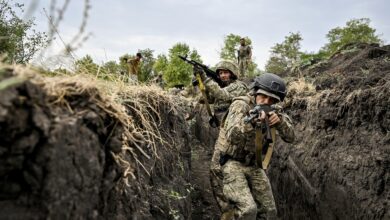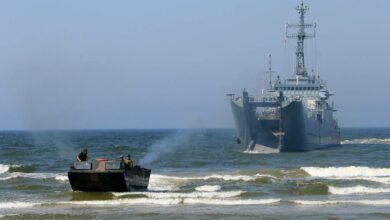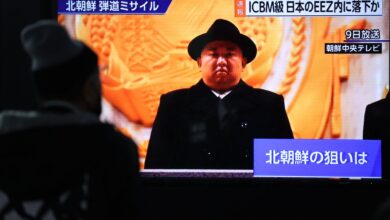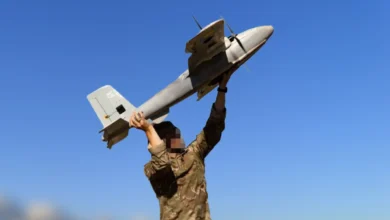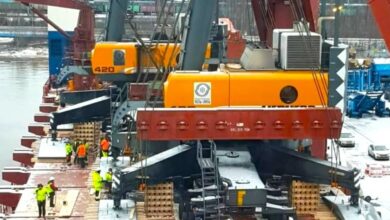Robotic vehicles: Russia’s quest for the weapons of future wars
After years of research and testing, multipurpose unmanned ground vehicles are finally being accepted for service alongside Russia’s troops.
Many remote-controlled systems, such as the armed Uran-9 combat multifunctional robotic system and the Uran-6 mine-clearing robotic vehicle, have been combat-tested by the Russian military in Syria.
Syria has become the testing ground for Russian technology that has not yet been officially accepted for service. According to media reports, some of the systems will be improved and upgraded based on field test results.
https://www.youtube.com/watch?v=g99Up9ikyyA
Ready for service acceptance
Lieutenant General Yuri Stavitsky, Chief of Russia’s Engineering Troops, said on Tuesday, May 22, that the Uran-6, along with the Skarabei remote-controlled inspection robotic system and the Sfera remote-controlled robotic system are expected to be accepted for service for Russia’s engineering troops this year.
“Work for their acceptance for service is planned in 2018,” Stavitsky said, adding that all were tested in Syria.
Several Uran-6s, developed by JSC 766 UPTK, were delivered to the engineering units of the Southern and the Eastern Military Districts in 2015.
#Russian mine-clearing robot 'Uran-6' at work in #Palmyra #Syria pic.twitter.com/M2cwp9VuT3
— Military Advisor (@miladvisor) April 6, 2016
The system, which weighs about 6 tons and can be transported by road, sea or air, consists of a lightweight demining robot, remote control unit, and payloads.
The robot, which is built on a tracked platform, is equipped with four video cameras that transmit real-time imagery to the remote control system. It can be fitted with several operating tools, such as mine sweeping devices.
According to Stavitsky, Russia is currently working on “promising” engineering equipment.
“In particular, this refers to the multifunctional robotic complex for clearing anti-tank mines, the TPVK-43 capacitor-type exploder for blasting mines and the IMP-3 induction mine detector,” the general said.

Uran-9 robot tank
The Uran-9 multipurpose unmanned ground combat vehicle, which was unveiled by JSC 766 UPTK in September 2016, is another robot successfully tested in Syria. It was showcased by the Russian military during the annual Victory Day parade on May 9.
https://www.youtube.com/watch?v=ncj2WXF5Gbs
The armed system is designed to provide remote reconnaissance and fire support during urban counter-terrorism and reconnaissance operations, while protecting military personnel and improving their combat effectiveness.
It consists of four unmanned ground vehicles, one mobile command station and a tractor for transportation.
The Uran-9’s turret is equipped with a 2A72 30-mm cannon capable of firing high explosive, incendiary and armor-piercing ammunition. Mounted parallel to the cannon is a Kalashnikov PKT/PKTM 7.62-mm machine gun.
The tank is also fitted with four 9M120-1 Ataka anti-tank guided missiles, which have a range of up to 6km and can penetrate up to 900mm of armor. Depending on the needs of the operation, it can be equipped with other light weapons, including four Igla-S short-range surface-to-air missiles.
The 3km range of reliable communication between the robot and the control station can be increased with the help of drone transponders.
Use of artificial intelligence
The use of robotic systems managed by an operator is reportedly the first step in the Russian military’s technology upgrade.
First Deputy Defence Minister Ruslan Tsalikov said the Russian Armed Forces are already using artificial intelligence.
“Artificial intelligence is going to develop [further] in almost all areas of the Armed Forces’ activities,” Tsalikov said in March. “Some elements of artificial intelligence … are already being actively used, for example, in unmanned systems and robotics.”
According to Russian state-owned media outlet RT, the Ministry of Defence is planning to introduce more autonomous artificial intelligence-driven equipment.
Vladimir Neelov, a military expert at the Russian Center for Strategic Perspectives Research, told The Defense Post that in the past five to six years, Russia has been actively engaged in the development of robotic systems such as drones, land and marine systems.
“This process intensified after the establishment in October 2012 of the Foundation for Advanced Studies – an analog of the American DARPA,” Neelov said. “Even though in terms of developing and launching new UAVs Russia lags far behind the U.S. and other states, when it comes to land complexes, [they] develop faster and are more elaborate from the conceptual point of view, which has been noted by foreign experts.”
However, it is still difficult to draw any far-reaching conclusions about the capabilities and effectiveness of these systems due to the lack of sufficient information, according to Neelov.
“Strictly speaking, this is the answer to the question of why no contracts for the purchase of Uran-9 have been concluded so far: as of now, it is still used by the Armed Forces at the experimental combat level,” he said.
Rostec Corporation subsidiary Rosoboronexport began promoting the Uran-9 internationally in 2016. Neelov said results of the tank’s combat use in Syria will allow potential customers to draw more established conclusions about the machine, which should enable them to make more informed purchasing decisions.
“From a technical point of view, the key components which ensure the effectiveness of such complexes like Uran-9 include the communication systems (to increase the distance at which the robot can work under operator control), the optics (the “eyes” of the robot, through which the operator sees), as well as power sources (to make the combat mission longer).”
“It is the successes in the development of these components that can make robots truly autonomous. Apparently, in recent years, Russia has achieved significant results in these areas,” Neelov said.
Controversy over AI use
As the artificial intelligence technology race unfolds, more countries, including China, France, the United Kingdom, other European Union members, and the United States, have become heavily invested in the research, which has been controversial.
Earlier this month, an internal petition calling for Google to stay out of “the business of war” was gaining support, with some workers reportedly quitting to protest a collaboration with the U.S. military.
About 4,000 employees were said to have signed a petition that began circulating three months ago, urging the internet giant to refrain from using artificial intelligence technologies developed by Google to make U.S. military drones better at recognizing what they are monitoring.
Tech news website Gizmodo reported on May 14 that about a dozen Google employees have quit over the pilot program.
“We believe that Google should not be in the business of war,” the petition reads, according to copies posted online. “Therefore, we ask that Project Maven be cancelled, and that Google draft, publicize and enforce a clear policy stating that neither Google nor its contractors will ever build warfare technology.”
Despite the controversy, countries continue to turn toward AI to boost their military capabilities.
Last week, Indian authorities announced that they have started work to incorporate AI to enhance operational preparedness of armed forces that will ultimately receive unmanned tanks, vessels, aerial vehicles and robotic weaponry.
“It is India’s preparation for next generation warfare. This [AI] is where the future is going to be. We need to prepare ourselves for the next generation warfare which will be more and more technology driven, more and more automated and robotized,” Defence Production Secretary Ajay Kumar said.
With reporting from AFP



